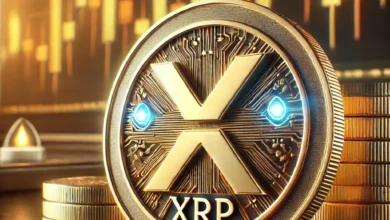BTC 800 Avage: Understanding Its Significance in the Crypto Market

Introduction
The cryptocurrency market is BTC 800 Avage always evolving, with Bitcoin remaining at the forefront of this digital revolution. One of the most talked-about metrics in the crypto trading world is the BTC 800 average, which plays a crucial role in technical analysis and trading strategies. This article will explore what the BTC 800 average is, how it influences trading decisions, and why it matters for both short-term traders and long-term investors.
What Is the BTC 800 Avage?

The BTC 800 average refers to the 800-day or 800-period moving average of Bitcoin’s price. Moving averages are widely used in technical analysis to smooth out price fluctuations and identify trends over time. The BTC 800 average can be calculated in different timeframes, including daily or hourly charts, depending on the trader’s strategy.
Understanding Moving Avages
A moving average (MA) is a calculation that averages Bitcoin’s price over a specific number of days or hours. The 800 moving average is considered a long-term indicator, helping traders determine overall market trends rather than short-term price swings.
Why 800?
Most traders use common moving averages like the 50-day, 100-day, or 200-day moving averages, but the 800 MA is significant because it provides a broader perspective of Bitcoin’s price action. It helps identify whether BTC is in a long-term bullish or bearish cycle.
The Importance of BTC 800 Aage in Trading
Identifying Market Trends
The BTC 800 average is crucial for spotting long-term trends. If Bitcoin’s price stays above the 800 MA, it indicates a strong bullish trend. Conversely, if the price is below this level, it suggests a prolonged bearish phase.
Traders and investors use this metric to determine when to enter or exit the market. For example, a sustained movement above the 800 MA might encourage long-term buying, while a drop below it could signal a selling opportunity.
Support and Resistance Levels
The BTC 800 average often acts as a support or resistance level in the market. Here’s how:
- Support Level: When Bitcoin’s price is above the 800 MA and retraces to touch it, traders look for signs of price bouncing back upward.
- Resistance Level: If BTC is below the 800 MA, it may struggle to break above this level, indicating strong resistance.
This makes the 800 MA an essential tool for predicting market reversals and managing risk effectively.
Long-Term Investing vs. Short-Term Trading
The BTC 800 average is more useful for long-term investors rather than short-term traders. Day traders focus on shorter moving averages like the 50 MA or 200 MA, while long-term investors use the 800 MA to confirm whether the overall trend supports holding Bitcoin for extended periods.
How to Use BTC 800 Avage in Your Strategy
1. Confirming Market Trends
If Bitcoin is consistently trading above the 800-day moving average, it signals a long-term uptrend. This gives confidence to investors who want to hold BTC for months or even years.
On the other hand, if BTC is below the 800 MA, it suggests weakness in the market. Some investors may wait for a price recovery before buying more Bitcoin.
2. Combining With Other Indicators
The BTC 800 average should not be used in isolation. It is most effective when combined with other technical indicators such as:
- RSI (Relative Strength Index): Helps determine if Bitcoin is overbought or oversold.
- MACD (Moving Average Convergence Divergence): Helps identify momentum shifts.
- Fibonacci Retracement Levels: Assists in identifying potential price reversal points.
Using multiple indicators together allows traders to make well-informed decisions instead of relying solely on the 800 MA.
3. Avoiding False Signals
No single indicator is 100% accurate. The BTC 800 average can sometimes give false signals, where Bitcoin briefly dips below it before bouncing back up. To avoid reacting too quickly, traders often wait for multiple daily confirmations before making significant moves.
Historical Performance of BTC 800 Avage
Looking at Bitcoin’s price history, we can see that the BTC 800 average has acted as a strong support level during previous bull cycles. For example:
- In 2017, Bitcoin maintained a strong uptrend while staying above the 800-day MA.
- During the 2020-2021 bull run, BTC repeatedly bounced off the 800 MA before hitting new all-time highs.
- In bear markets, BTC usually trades below the 800 MA, signaling long periods of price correction.
By analyzing historical data, traders can better predict future price movements and plan their strategies accordingly.
Potential Risks and Limitations
1. Lagging Indicator
Moving averages are lagging indicators, meaning they reflect past price movements rather than predicting the future. The BTC 800 MA provides valuable insights, but it should be used alongside real-time market data to make accurate decisions.
2. Not Suitable for Short-Term Trading
Short-term traders may find the BTC 800 average too slow to respond to price fluctuations. They prefer faster-moving averages like the 50 or 100 MA to capture short-term trends.
3. External Market Factors
Bitcoin’s price is influenced by various factors beyond technical analysis, such as:
- Regulatory changes
- Macroeconomic trends
- Institutional adoption
- Global financial crises
While the BTC 800 MA is useful, traders must consider these external factors before making trading decisions.
Conclusion
The BTC 800 average is an essential tool for crypto traders and investors looking to understand long-term Bitcoin trends. It helps identify bullish and bearish cycles, serves as a strong support/resistance level, and provides valuable insights into BTC’s price movements.
However, like any indicator, it should not be used in isolation. Combining the BTC 800 MA with other technical and fundamental analysis tools can significantly enhance trading strategies.
By understanding and applying the BTC 800 average correctly, traders can make more informed decisions, minimize risks, and take advantage of Bitcoin’s long-term potential in the ever-evolving cryptocurrency market.



